
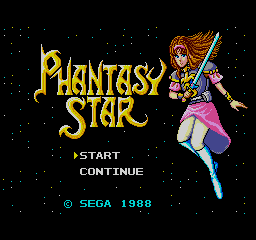
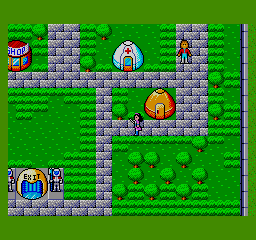
Phantasy Star
Sega Master System
Sega
1987 1988
Really impressed by the title screens in the Phantasy Star series. This one is beautiful: the music, the logo text, the giant screen-spanning portrait of the lead character. Certainly not something Nintoddlers like myself were ever used to seeing. I didn't even know this game/series existed "back in the day" until some kid showed me GamePro issue #8 on the playground and I realized that Sega was harboring JRPGs with SPACE and ANIME GIRLS and so forth. Never got to play any of this until my late 20s but it still feels like a "nostalgic" series.
Phantasy Star (talking about this particular game now) feels like something that should have been huge. Inspired by DQ (Dragon Quest not Dairy Queen), the game was released in December of '87 in Japan, just TWO DAYS after Final Fantasy. But -- a localized version hit the States as early as November of '88! For comparison, that's over a year before us burgers got Final Fantasy, and it even predates the localized Westoid Dragon Warrior!!! This hidden gem was just sitting there and no one knew about it. And for one simple reason: it was on the SMS and not the NES. Hate to see it!!
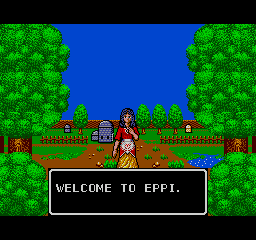
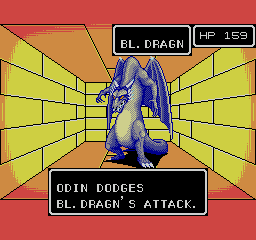
And like Final Fantasy, the general setting is "science fantasy" but with more emphasis on space and futurism. "Science fantasy" here meaning that there are spaceships and high-tech cities but the protagonist fights with a sword and there are dungeons inhabited by dragons. The protagonist is a young lady named Alis. During the opening cut scene, her brother is killed by the big bad evil dude Lassic and Alis swears revenge. I really love this character. She isn't a girlboss or any other such nonsense. She's a girl with a sword and a mission and some buddies she meets along the way. Alis has high defense and quickly learns some (comparatively) weak magic. Her first buddy is a cat named Myau (I think this is like a "meow" onomatopoeia). Then there's Odin (big guy who shoots guns) and Noah (the classic weakling mage who relies on spellcasting). The game unfolds in that stereotypical overworld / town / dungeon style, with some notable quirks. There are three planets to bounce around between. The first, Palma, is beautiful and green and sports some of the best visuals of the game. Motavia is a desert filled with giant anthills (you fight antlions in these, not ants, I just realized). Dezoris is the third planet and it sucks. An icy expanse, it had potential, but most time on Dezoris is spent darting around in these tedious underground tunnels.
The "flow" of Phantasy Star will mercilessly cuck many first-time players. The game's nonlinear -- sort of; there's a preferred order to approach things but the game's not just gonna come out and say it. Many dungeons are theoretically optional. They'll house a weapon or some armor but no plot-specific items. And a specific Phantasy Star tradition begins here with game #1: there are very few bosses, and those that do appear will likely show up again later as standard enemies. Dungeons themselves are atypical. They're first person and grid-based, akin to the old WRPGs. And they're brutal, with all the expected dead ends, trapdoors, and long coridoors that end with useless loot. And don't expect any help with mapping. There's no in-game map, anywhere, and the compass item simply indicates cardinal direction. Get out that graph paper. The dungeons LOOK amazing, at first. Every one has the same brick layout, just a different color. And the music gets repetetive, though the swap to "dungeon theme #2" halfway through the game is a fantastic shit just got real moment.
Battles are turn-based and absolutely incredible. They're modeled after Dragon Quest, so the enemies are visible in battle but not the heroes. Well, enemies or enemy? That's an oddity of Phantasy Star: Alis and her buds can face multiple foes but they'll always be the same "type" of bad guy, and only one is represented onscreen. It's also impossible to target specific enemies, which isn't as bad as it sounds. Most battles still come down to "mash A" (or whatever the SMS button is) and Odin's gunfire blasts everyone at once. The visuals are glorious, with animated player and enemy attacks, plus gorgeously detailed full-screen backgrounds. A huge contrast to the stark blackness of Dragon Quest II and the odd boxy presentation of Final Fantasy. Items and money netted after successful combat are presented in chests and opening these is optional. Many are trapped, which is a huge pain in the ass (at a certain point in the game most damage will actually be caused by chests so skipping them is an imperative!). Interestingly, Phantasy Star features plenty of static damage and health recovery. For instance, Odin's laser gun will always deal 20 damage to each enemy, and Alis' heal spell will recover 20 HP.
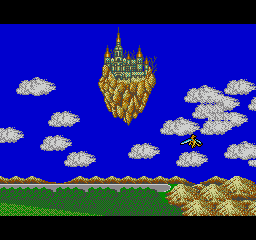
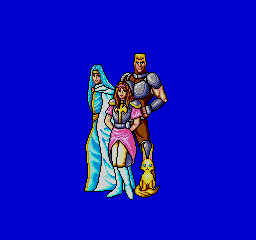
There are some very specific elements to the game that elevate it beyond other JRPGs of the time. It's possible to save at any time outside of battle. We're talking almost literal "save states" in an 8-bit console RPG. Inns, tents, "imperial scrolls" absolutely btfo. I've already touched in the graphics but the game looks absolutely astonishing. Brilliant use of the SMS color palette. The towns are iconic with their walkways and dome structures. Pause the game at any time, or talk to an NPC, and the game switches to the battle viewpoint sans enemies. There are frequent cut scenes with PC-88 Falcom-esque borders surrounding the action. It's sublime. The OST is extremely good, with a caveat. As many have pointed out, the game sounded completely different in Japan: richer and fuller on the Mark III (Japanese Master System) sound chip. But I honestly prefer the SMS PSG tunes, with the trebly synths and staticky drums. It all feels sparse and ethereal, meshing perfectly with the space motif.
The game can also be a colossal pain in the ass. I can't conceive how it's beatable without a walkthrough. Good luck finding the shortcake with no assistance. Or anything else for that matter. Phantasy Star is also unbalanced as all hell. Alis can very easily die in the very first battle, depending on how the RNG selects an enemy. The "run" command seems to work 90% of the time but still... The game stays hard regardless of one's dedication to grinding. Character levels are capped at 30, and the final couple dungeons and bosses are still tough even with a fully decked-out power-leveled party. The penultimate dungeon (or, chain of dungeons) is horrific. Absolutely overly huge and complex, with a useless prank "town" halfway through that offers NO PLACE to heal!! Diabolical. This is where the "save anywhere" feature can actually be a liability.
And yet... I'm giving this a perfect score. This is based on the game's overall vibe, feel, aesthetics, je ne sais quoi, whatever, not an "average" of everything I've touched on. The best game on the Sega Master System (no contest), probably the best 8-bit JRPG, and one of Sega's crowning moments. Unstoppable.
Rating: 5/5
Reviewed: 10/13/25